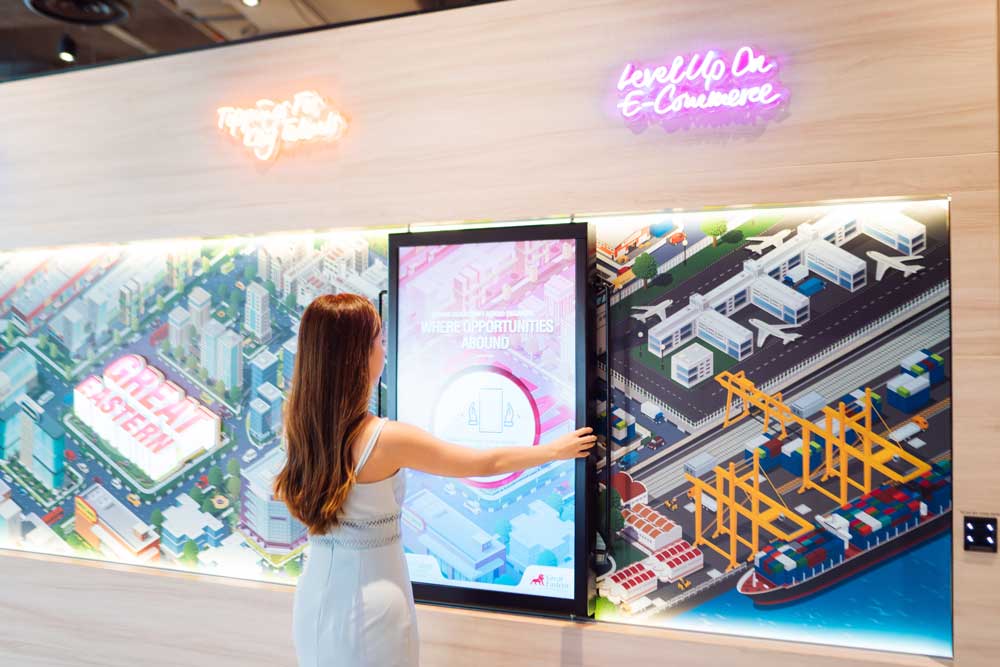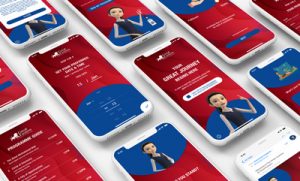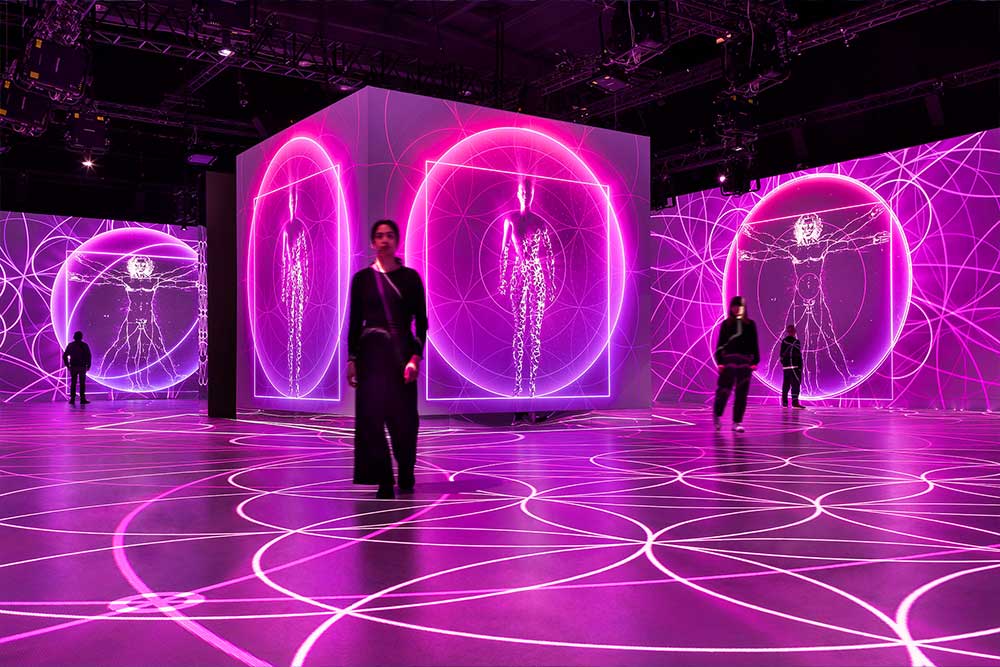Have you ever found yourself happier when you are playing a game, participating in an activity or simply just by looking at something at the museum? These experiences are all part of what we call interactive media, where the human brain processes and interacts, resulting in emotions, feelings and behaviours.
In this article, we will be talking more about the types of interactive media and how it affects the human brain. You can also find out how you can make use of interactive media to help your business or brand effectively engage and reach out to your target audiences.
What is Interactive Media and the psychology behind it?
Interactive media refers to a large spectrum of media that allows user interaction, such as gamification, mobile applications, immersive exhibitions and many more.
 As businesses evolve and dive deeper in this day and age, we will often find ourselves searching for how people feel, think and behave in response to interactive media. This understanding will allow businesses to better reach out and retain their target audiences.
As businesses evolve and dive deeper in this day and age, we will often find ourselves searching for how people feel, think and behave in response to interactive media. This understanding will allow businesses to better reach out and retain their target audiences.
User experience (UX) is also one of the key aspects that will engage one’s mind to allow immersion, enjoyment and satisfaction. A good user experience (UX) will have a steady flow that provides clear goals, timely feedback and will match the user’s skills. Games and other forms of interactive media are often designed to make the people feel good about themselves. When people experience the correct flow, they are more likely to continue using the media and gain a sense of achievement
 With that being said, excessive use of interactive media can also result in addiction, anxiety and even depression. Like many other forms of addiction, gaming addiction can be driven by a mix of biological, psychological, and social factors.
With that being said, excessive use of interactive media can also result in addiction, anxiety and even depression. Like many other forms of addiction, gaming addiction can be driven by a mix of biological, psychological, and social factors.
Addicted gamers often experience a rush of dopamine, a neurotransmitter that plays an important role in the brain’s reward and pleasure centres, when they play games. This often leads to them craving for even more gaming.
It is hence extremely important for businesses and brands to find the right balance of interactive media that will help them successfully engage their audiences in an organic and fulfilling way.
Augment your businesses through effective Interactive Media
As technology soars beyond our grasp, how can you continue to keep your audiences engaged? In this last part of our insight, we will talk about different types of interactive media and why it is effective.

1) Immersive Gamification
Gamification is one of the most common and also one of the most useful ways to engage people. Research studies have shown that gamification can help to generate awareness, create engagement and build brand loyalty. Gamified experiences also keeps the users engaged by more than 50% when compared to experiences without gamification.

(Souce: Estée Lauder Super-charged ANRcade Game, developed by Trinax)
In this project, Estée Lauder wanted to engage their target audience and gain more awareness for their beauty products. Gamification was used in the form of a retro PAC-man game where users had to capture as many nutrients of the Advanced Night Repair (ANR) products, while avoiding bad objects such as harmful environmental assaults.
This simply yet effective gamified pop-up experience allowed Estée Lauder to attract people for engagement and retention. This effective experience will also influence people’s mind and behaviour towards the brand, often in a positive way.
2) Effective User Interface & Experience (UI/UX)
How often do you see people drop off and lose interest when the website or game is hard to use? The human brain works in a very specific way in which when the experience is not easy to use, we will lose interest very quickly.
It is extremely important for businesses and brands to know the importance of UI/UX, and how it can help them further augment their offerings and solutions.
 (Souce: DBS Moolahpoly Multiplayer Board Game, developed by Trinax)
(Souce: DBS Moolahpoly Multiplayer Board Game, developed by Trinax)
Taking inspiration from popular game Monopoly, Trinax worked with DBS to create Moolahpoly, a multiplayer board game. This interactive and turn-based game allows users to climb up the wealth ladder against fellow players as they engage in various activities and challenges.
UI/UX is one of the key components for this project as this is a fully digital experience that requires constant navigation. With clear objectives, feedback and the competitive elements, this game demonstrates a good example of good UI/UX flow that invokes the feel-good factor for users.
3) Interactive Galleries and Museums
Boring museums are very much a thing of the past as many brands now embrace technological advances to provide an immersive physical or hybrid experience. Technological advances have allowed brands to make use of AR/VR, gamification, virtual mascots, 3D interactive experiences and more to put together an immersive and one-of-a-kind physical experience.
 (Souce: National Museum of Singapore OFF/ON Exhibit, developed by Trinax)
(Souce: National Museum of Singapore OFF/ON Exhibit, developed by Trinax)
OFF/ON: Everyday Technology That Changed Our Lives, the National Museum’s exhibition focuses on the use of technology to present gadgets from between the 1970s and 2000s and the contexts in which they were used in Singapore.
A series of more than 20 interactive media touch points such as games, physi-digital engagements, telecommuting, photo-taking and interactive entertainments were incorporated in this interactive exhibition. Such experience will often strengthen branding, encourage re-engagement and leave a lasting impression.
 (Souce: Great Eastern VOLTAGE, developed by Trinax)
(Souce: Great Eastern VOLTAGE, developed by Trinax)
Great Eastern VOLTAGE is a fully integrated 360 centre that offers the public insights into Great Eastern’s rich history, culture and the endless social impact and possibilities, through a slew of interactive and immersive experiences. Each interactive media has been carefully curated to bring users on a holistic journey that effectively engages the human brain. This in turn will help brands achieve their objectives in the short and long run.
Businesses and brands can also opt for a hybrid experience where users can experience both a physical and virtual gallery, exhibit or museum.
 In summary, the psychology behind interactive media is a riveting and rapidly changing field. Through the understanding of how people think, feel, and behave when they use interactive media, we can now design more compelling, immersive and enjoyable technological experiences.
In summary, the psychology behind interactive media is a riveting and rapidly changing field. Through the understanding of how people think, feel, and behave when they use interactive media, we can now design more compelling, immersive and enjoyable technological experiences.






